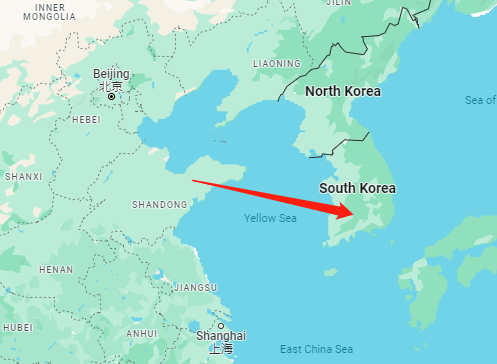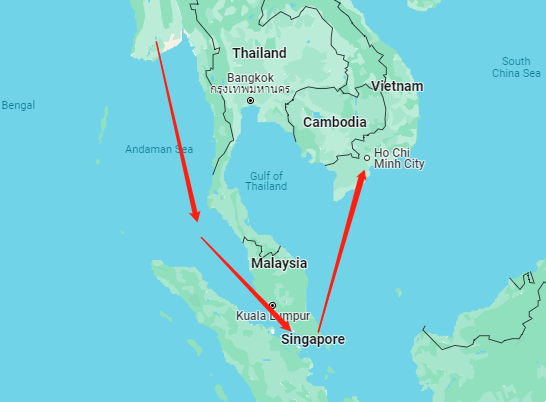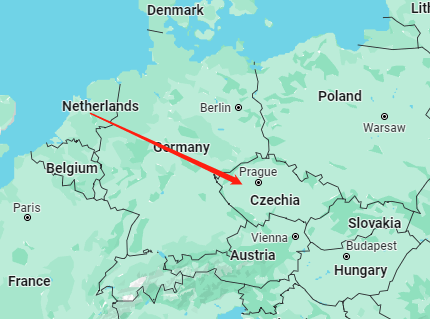Nowadays, when you casually stroll into a supermarket, you often find a rich variety of goods from all over the world on the shelves: instant noodles from Korea, cherries from Japan, mangosteens from Thailand, grapes from India, and the list goes on.
Moreover, items you can’t live without, like your smartphone, music earphones, office computer, or newly purchased smart home appliances, may have components sourced from various corners of the globe. Unbeknownst to us, our surroundings are filled with products from different countries, and this is the impact brought about by international trade.
What is international trade?
International trade involves the exchange of goods between two or more countries or regions. The importance of international trade lies in its role as a global economic trend. By engaging in international trade, a country can leverage its comparative advantages and benefit, achieving a win-win outcome.
For instance, China exports textiles to the United States. Different countries possess distinct comparative advantages due to factors such as geographical location, climate, population, and technological level. China, with its early development in the textile industry and relatively low labor costs, produces textiles that are inexpensive yet of good quality, making it China’s advantageous industry. On the other hand, the United States has higher labor costs and may find it more profitable to invest in industries other than textile production.
Thus, in the textile sector, China holds a comparative advantage over the United States. By importing textiles from China rather than producing them domestically, the United States can save costs and have the opportunity to generate more profits. Meanwhile, China benefits from exporting textiles, earning revenue from labor services and creating more job opportunities. China and the United States achieve a win-win outcome in trade.
International trade is often more complex and risky than internal trade. When engaging in foreign trade, various factors must be considered because countries differ significantly in economic policies, laws and regulations, language, and customs.
For example, when deciding to cooperate with a company from a certain country, it’s crucial to thoroughly understand the local trade policies in advance. This includes specific regulations on imports, exports, and tariffs, as some countries have strict trade protection measures. Moreover, when dealing with foreign suppliers, especially those from non-English-speaking countries, communication barriers may arise. Therefore, it may be necessary to enlist the help of a sourcing agent familiar with the situation in that country to address any issues.
What is the classification of international trade?
Types of international trade primarily include import trade, export trade, and entrepot trade. Import and export trade are the most well-known among them.
Import trade

Import trade involves bringing goods from foreign countries into the domestic market for sale. When a country lacks certain products, it imports them from other countries. For example, China imports soybeans from Brazil, Japan imports mineral fuels from neighboring countries, and many countries with limited oil resources import oil from Saudi Arabia, Russia, the United States, and other places.
Import trade not only introduces foreign products, intensifying market competition, but also brings in more new products and elements, making the domestic market more vibrant. It also serves as a reminder to domestic enterprises not to become complacent, stimulating their innovation and growth
Factors such as tariffs, foreign trade policies, trade agreements, and currency can all influence import and export trade. Fiscal support from the government can greatly promote imports.
Export trade
Export trade involves selling domestic goods to foreign markets. A country typically exports its surplus resources or products. For instance, Saudi Arabia exports oil, the United States sells pharmaceuticals and electronics worldwide, Japan is a major exporter of automobiles, and China, as a manufacturing powerhouse, produces 60% of the world’s daily necessities.
Export trade brings in capital and serves as a source of foreign exchange reserves for a country. For businesses, exporting allows them to avoid continued competition in saturated domestic markets, expand into new sectors and consumer groups, innovate new types of export products, broaden their international perspectives, and enhance their competitiveness.
To increase exports, a country can adopt measures such as reducing tariffs, providing export subsidies, or devaluing its currency.
Entrepot trade
Entrepot trade typically involves three countries. When goods traded between an importing country and the country of origin pass through a third country before being sent to the exporting country, it constitutes entrepot trade.
Businesses choose entrepot trade mainly to avoid anti-dumping investigations and high tariffs. Entrepot trade avoids direct trade relations between the country of origin and the importing country, thus circumventing anti-dumping investigations that might result from direct imports from the country of origin.
Additionally, if there are tariff preferences and trade agreements between the transit country and the country of origin, it can significantly reduce tariff costs. Therefore, businesses often choose transit ports with special tariff preferences and favorable port conditions, such as free trade ports.

As shown in the diagram, Singapore is a renowned transshipment hub worldwide, where many countries opt to route their goods through before reaching their final destinations. In the illustration, goods from Myanmar are destined for Vietnam. These goods first pass through the Strait of Malacca, arrive in Singapore, and finally reach the port of Vietnam.
Of course, sometimes goods don’t go through a third country. Instead, they’re directly transferred from the country of origin to the importing country, which is still considered a form of entrepot trade. This is done by transferring ownership of the goods to a trader in the third country using trade documents, then transferring ownership to the buyer in the importing country. This method, known as document processing trade, is the most common form of entrepot trade today.
For instance, if Myanmar sells goods to Vietnam, the Myanmar seller first transfers ownership of the goods to a trader in Singapore using trade documents. The trader in Singapore then signs a sales contract with the buyer in Vietnam, transferring ownership to the Vietnamese buyer. Through this process of signing contracts, ownership of the goods changes hands twice, even if the goods don’t physically pass through Singapore. This transaction still counts as entrepot trade.
Entrepot trade isn’t entirely legal. When engaging in entrepot trade, importers and exporters must adhere to international laws and avoid using fraudulent or unreasonable methods, as they could face legal consequences.
Distinguishing between transit trade and entrepot trade
Transit trade, like entrepot trade, involves goods passing through a third country. For example, goods from Country A pass through Country C (without processing) before being shipped to market in Country B. For Country C, this is transit trade. In transit trade, ownership of goods doesn’t change hands through the third country, which is the main difference between transit trade and entrepot trade.
Transit trade is often necessary for landlocked countries, as they must route goods through neighboring countries to access the sea. However, if goods are transported via air through a third country, it’s generally not considered transit trade.

For example, Czechia is a landlocked country in Europe, meaning it doesn’t have any seaports. So, if goods are shipped from China and need to reach Czechia, they first have to arrive at a seaport in another European country, like the Port of Rotterdam in the Netherlands. From there, they are transported to the final destination in Czechia via railways or highways.
The End
We hope this article proves helpful to you.
We are Jingsourcing, and we’ve assisted over 4000 customers in finding their desired suppliers and solving various issues related to procurement, shipping, products, and more. If you have any questions regarding imports or exports, feel free to Reach Out To Us.


My brother suggested I might like this blog. He was totally right. This post actually made my day. You can not imagine simply how much time I had spent for this info! Thanks!